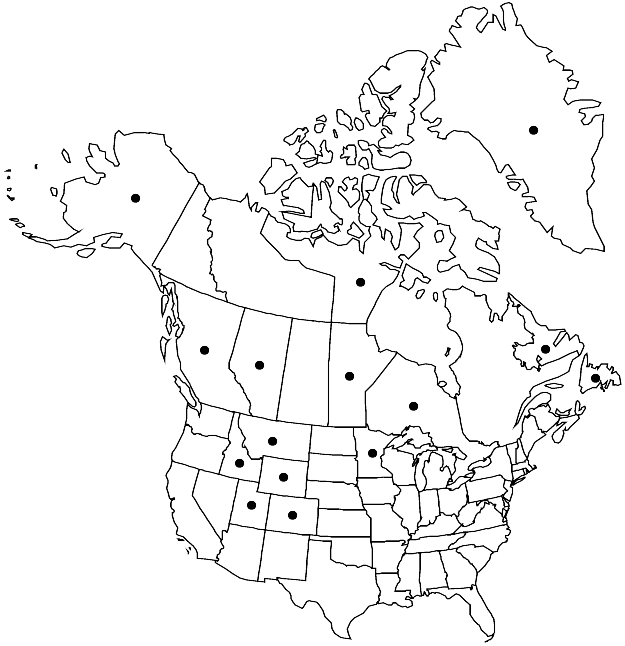Pseudoleskeella rupestris
Lindbergia 17: 64. 1992.
Plants green, red-green, or orange-green. Stems somewhat loosely appressed to substrate, branches curved to erect. Stem-leaves not catenulate when dry, not homomallous, broadly lanceolate to ovatelanceolate, gradually narrowed to apex, not or weakly concave, not plicate, 0.5–1.5 mm, 3: 1; base not flaring or cordate; margins plane or weakly recurved, entire or weakly serrulate distally; apex short-acuminate, not falcate; costa usually single, rarely 2-fid near tip, strong, to mid leaf or into acumen, somewhat flared in acumen; medial laminal cells 2–3: 1, walls incrassate. Branch leaves ovatelanceolate, 0.5–1.2 mm; laminal cell-walls thin. Stoloniferous leaves broadly ovatelanceolate to ovate. [Seta brown or redbrown, 0.1–0.3 cm. Capsule erect, cylindric, symmetric, 2–3 mm. Spores 8–12 µm].
Phenology: Capsule maturity unknown.
Habitat: Dry shaded calcareous rock
Elevation: low to high elevations (0-3000 m)
Distribution

Greenland, Alta., B.C., Man., Nfld. and Labr., Nunavut, Ont., Alaska, Colo., Idaho, Minn., Mont., Utah, Wyo., w, n Europe
Discussion
Pseudoleskeella rupestris is similar to Leskeella nervosa, and should probably be included in that genus. According to W. A. Weber and R. C. Wittmann (2007), plants of P. rupestris from Colorado bear clustered flagelliform branchlets in axils of distal secondary branch leaves, a characteristic trait of L. nervosa. The leaves are irregularly twisted when dry.
Selected References
None.
Lower Taxa
"broad" is not a number.